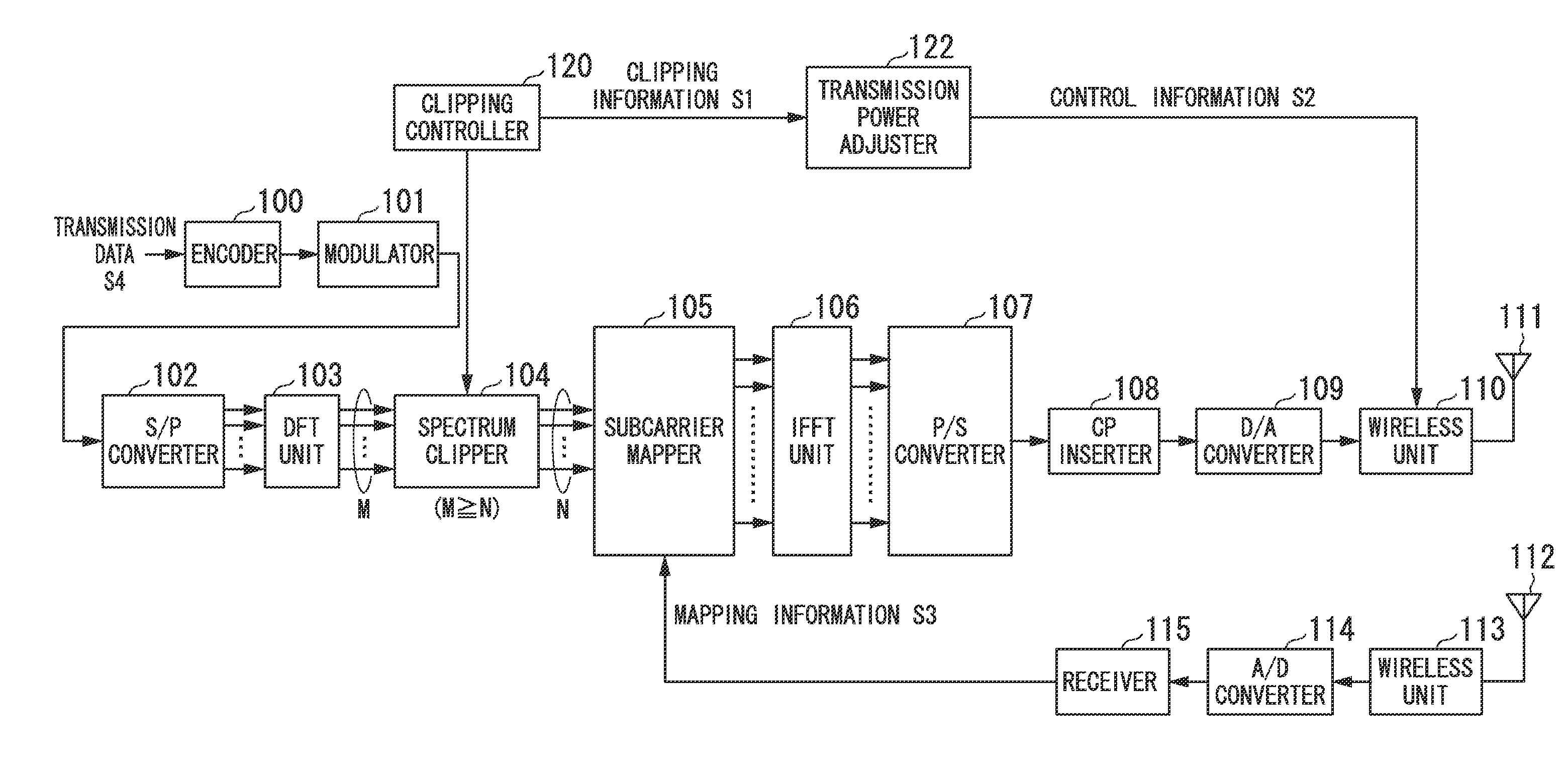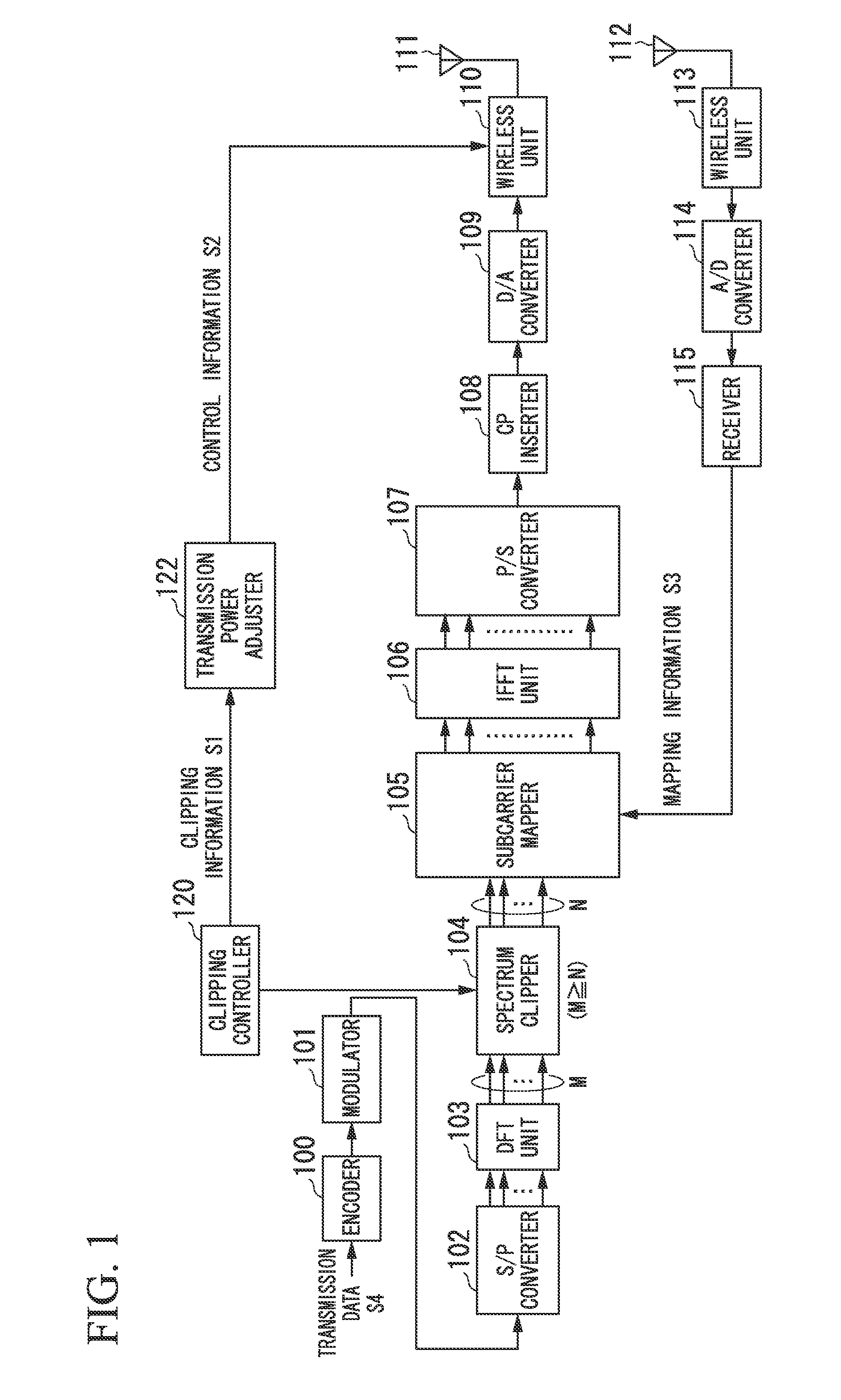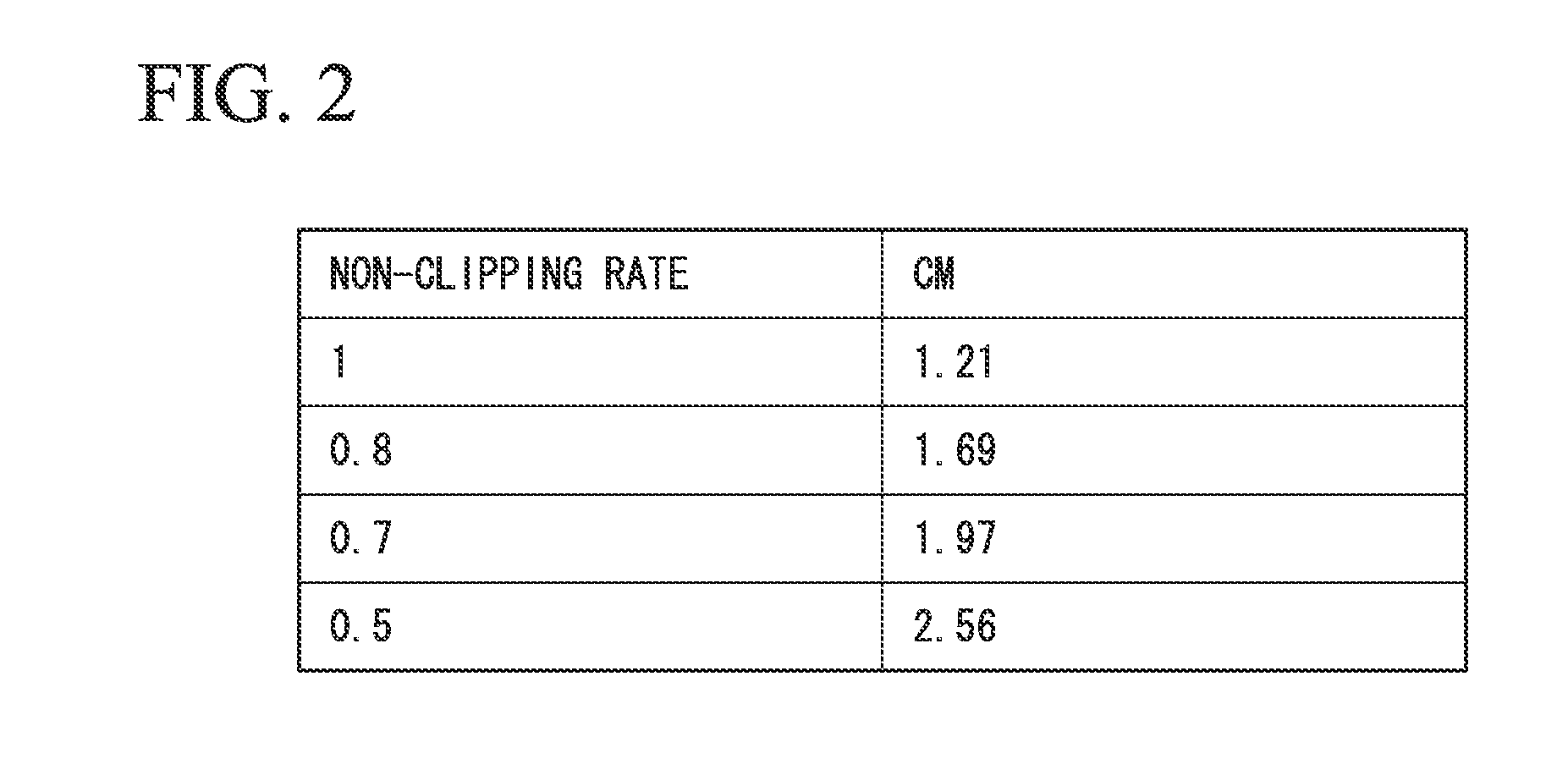Wireless communication system, wireless transmission device and wireless transmission method
a wireless transmission and wireless communication technology, applied in the field of wireless transmission devices and wireless transmission methods, can solve the problems of significant limitations in transmission power and inability to uplink, and achieve the effect of improving cell throughput and throughput of terminal devices
- Summary
- Abstract
- Description
- Claims
- Application Information
AI Technical Summary
Benefits of technology
Problems solved by technology
Method used
Image
Examples
first embodiment
[0058]FIG. 1 is a block diagram illustrating a wireless transmission device according to the present invention. As an example, this wireless communication device is a terminal device that performs transmission to a base station device in a wireless communication system. Hereinafter, a base station device is referred to as a wireless reception device. This wireless transmission device includes: an encoder 100; a modulator 101; an S / P converter 102; a DFT unit 103; a spectrum clipper 104; a subcarrier mapper 105; an IFFT unit 106; a P / S converter 107; a CP inserter 108; a D / A converter 109; a wireless unit 110; a transmission antenna unit 111; a reception antenna unit 112; a wireless unit 113; an A / D converter 114; a receiver 115; a clipping controller 120; and a transmission power adjuster 122.
[0059]The encoder 100 receives transmission data S4, performs error correction coding on the received transmission data S4, and outputs to the modulator 101, the transmission data subjected to ...
second embodiment
[0087]In the second embodiment, with reference to a method described in specifications of the next generation cellular communication (3.9G), particularly, a method using the relationship between transmission power control and clipping is explained under an assumption that the clipped DFT-S-OFDM is used for an uplink. For 3.9G, it has been determined to use the SC-FDMA. Formula (1) is a formula used to determine a transmission power value to be used for uplink data communication defined in a specification of the next generation cellular communication (3.9G).
PPUSCH(i)=min {PCMAX, 10×log10(MPUSCH(i))+PO—PUSCH(j)+α(j)×PL+ΔTF(i)+f(i)} (1)
[0088]In formula (1), PUSCH is an abbreviation of a physical uplink shared channel, and denotes a data channel for transmitting uplink data. PPUSCH(i) denotes a transmission power value for the i-th frame. j denotes a parameter determined according to a method of assigning frequencies to be used. A value of j differs among a case where assignment of fre...
third embodiment
[0102]In the third embodiment, a method of improving the cell throughput and the throughput for terminal devices by effectively using the clipped DFT-S-OFDM for an uplink in the cellular system is explained.
[0103]FIG. 5A is a diagram illustrating the position relationship between wireless transmission devices (terminal devices) 201 to 203 which transmit clipped DFT-S-OFDM signals and a wireless reception device (base station device) 210 which are included in a cellular system. It is assumed in the case of FIG. 5A that the farthest terminal device from the base station device 210 is the terminal device A (201), followed by the terminal device B (202) and the terminal device C (203) in this order. An ellipse 220 denotes a service coverage area in which the wireless base station device can communicate with the terminal devices. FIG. 6 is a diagram illustrating the relationship between each terminal device and a non-clipping rate according to the third embodiment.
[0104]As shown in FIGS....
PUM
 Login to View More
Login to View More Abstract
Description
Claims
Application Information
 Login to View More
Login to View More - R&D
- Intellectual Property
- Life Sciences
- Materials
- Tech Scout
- Unparalleled Data Quality
- Higher Quality Content
- 60% Fewer Hallucinations
Browse by: Latest US Patents, China's latest patents, Technical Efficacy Thesaurus, Application Domain, Technology Topic, Popular Technical Reports.
© 2025 PatSnap. All rights reserved.Legal|Privacy policy|Modern Slavery Act Transparency Statement|Sitemap|About US| Contact US: help@patsnap.com



